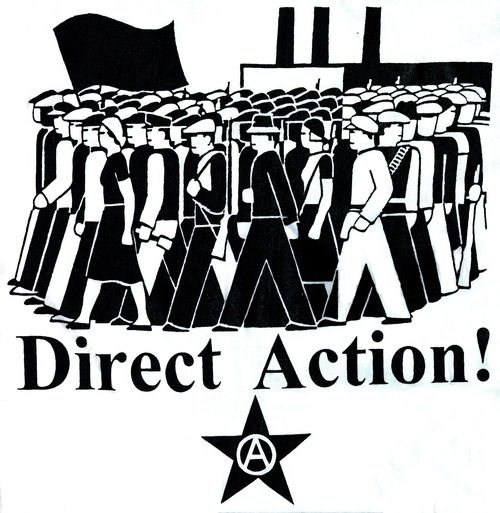What has happened to the great civil rights and black power movements of the 1960s and 1970s? Where are the mass movements of today within this country? The short answer: They got funded. Social justice groups and organizations have become limited as they’ve been incorporated into the nonprofit model. We as activists are no longer accountable to our constituents or members because we don’t depend on them for our existence. Instead, we’ve become primarily accountable to public and private foundations as we try to prove to them that we are still relevant and efficient and thus worthy of continued funding.
In theory, foundation funding provides us with the ability to do the work—it is supposed to facilitate what we do. But funding also shapes and dictates our work by forcing us to conceptualize our communities as victims. We are forced to talk about our members as being “disadvantaged” and “at risk,” and to highlight what we are doing to prevent them from getting pregnant or taking drugs—even when this is not, in essence, how we see them or the priority for our work.
And what are our priorities? Perhaps the real problem is that we don’t spend enough time imagining what we want and then doing the work to sustain that vision. That is one of the fundamental ways the corporate-capitalist system tames us: by robbing us of our time and flooding us in a sea of bureaucratic red tape, which we are told is a necessary evil for guaranteeing our organization’s existence. We are too busy being told to market ourselves by pimping our communities’ poverty in proposals, selling “results” in reports and accounting for our finances in financial reviews.
Adjoa Florência Jones de Almeida
Sista II Sista Collective, Brooklyn, New York
"Who is Oakland?" also dissected the tendency to weaken militance brought on by the NPIC:
On the Non-Profit Industrial Complex (NPIC), Again
Nonprofits exist to maintain society as we know it. Nonprofits often provide vital social services in the spaces left by the state’s retreat from postwar welfare provisions, services which keep women, queers, and trans people, particularly those who are poor and of color, alive. Post-WWII welfare provisions themselves were provided primarily to white families – through redlining or the racially exclusive postwar GI Bill for example. Social justice nonprofits in particular exist to co-opt and quell anger, preempt racial conflict, and validate a racist, patriarchal state. These organizations are often funded by business monopolies which have profited from and campaigned for the privatization of public social services. This has been argued extensively by many who have experienced the limits of nonprofit work firsthand, most recently by INCITE! Women of Color Against Violence.
Indeed, the exponential growth of NGOs and nonprofits could be understood as the 21st century public face of counterinsurgency, except this time speaking the language of civil, women’s, and gay rights, charged with preempting political conflict, and spiritually committed to promoting one-sided “dialogue” with armed state bureaucracies. Over the last four decades, a massive nonprofit infrastructure has evolved in order to prevent, whether through force or persuasion, another outbreak of the urban riots and rebellions which spread through northern ghettos in the mid to late 1960s. Both liberal and conservative think tanks and service providers have arisen primarily in response to previous generations of radical Black, Native American, Asian American, and Chican@ Third World Liberation movements. In the 21st century, social justice activism has become a professional career path. Racial justice nonprofits, and an entire institutionally funded activist infrastructure, partner with the state to echo the rhetoric of past movements for liberation while implicitly or explicitly condemning their militant tactics.
The material infrastructure promoting these ideas is massive, enabling their extensive dissemination and adoption. Largely funded by philanthropic organizations like the Ford Foundation ($13.7 billion), Rockefeller Foundation ($3.1 billion), or the Bill & Melinda Gates Foundation ($37.1 billion), the US nonprofit sector has grown exponentially, often through the direct privatization of the remnants of America’s New Deal-era social safety net. This funding structure ties liberal organizations charged with representing and serving communities of color to businesses interested primarily in tax exemptions and charity, and completely hostile to radical social transformation despite their rhetoric. In 2009 nonprofits accounted for 9% of all wages and salaries paid in the United States, generated $1.41 trillion in total revenues, and reported $2.56 trillion in total assets. One need only hear the names of these philanthropic organizations to realize that they are or were some of the largest business monopolies in the world, whose foundations are required to donate 5% of their endowment each year, while 95% of the remaining funds remain invested in financial markets. The public is asked to thank these organizations for their generosity for solving problems which they are literally invested in maintaining.
“With increasing frequency,” Filipino prison abolitionist and professor Dylan Rodriguez argues, “we are party (or participant) to a white liberal ‘multicultural’/‘people of color’ liberal imagination which venerates and even fetishizes the iconography and rhetoric of contemporary Black and Third World liberation movements, and then proceeds to incorporate these images and vernaculars into the public presentation of foundation-funded liberal or progressive organizations. …[T]hese organizations, in order to protect their nonprofit status and marketability to liberal foundations, actively self-police against members’ deviations from their essentially reformist agendas, while continuing to appropriate the language and imagery of historical revolutionaries. Having lived in the San Francisco Bay Area from 1995-2001, which is in many ways the national hub of the progressive ‘wing’ of the NPIC, I would name some of the organizations…here, but the list would be too long. Suffice it to say that the nonprofit groups often exhibit(ed) a political practice that is, to appropriate and corrupt a phrase from…Ruth Wilson Gilmore, radical in form, but liberal in content.”

The other civil rights movement.


